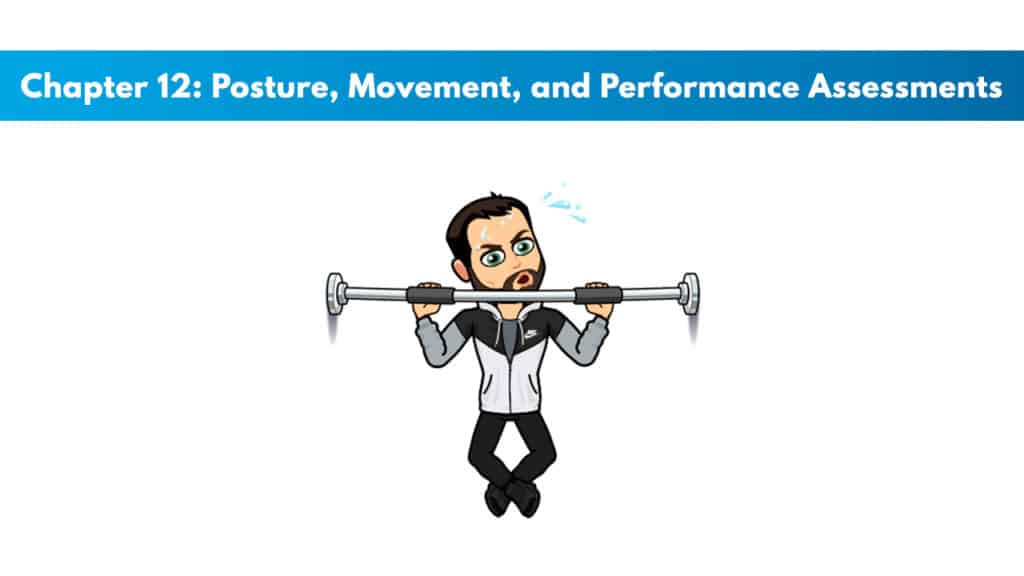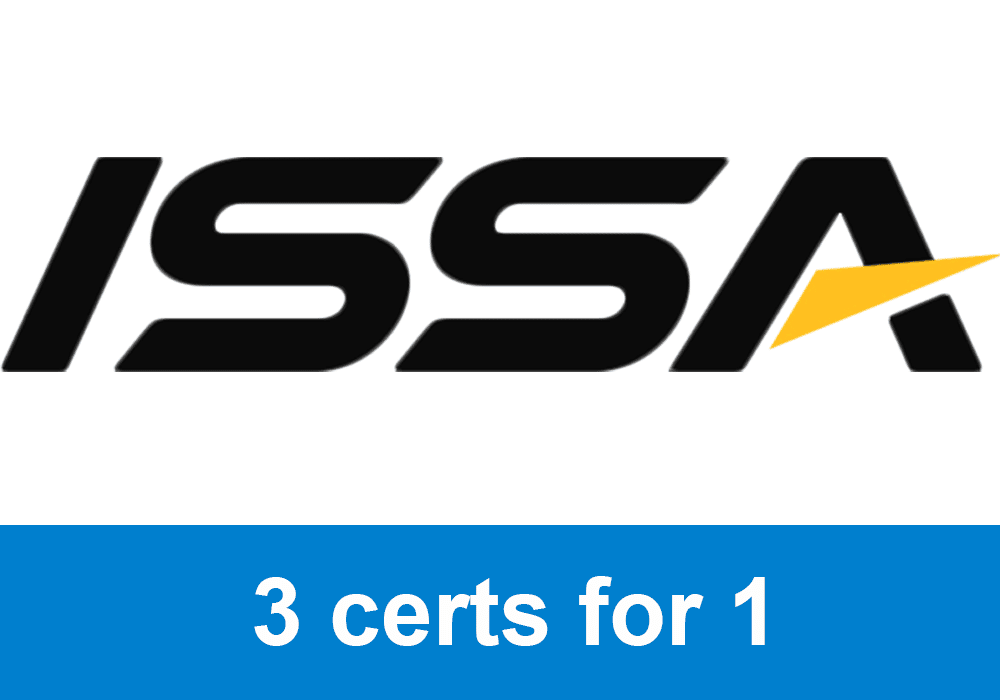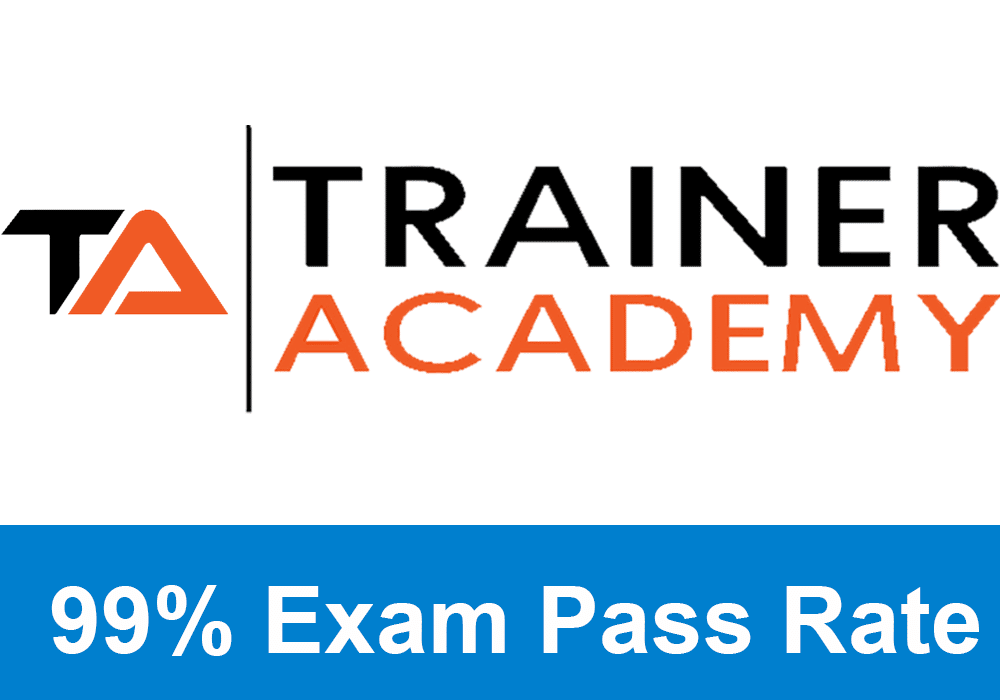
If you have not signed up for NASM CPT, sign up here to save 25% with my personal code PTP25.
Get your copy of the NASM CPT exam cheat sheet. It helps immensely in studying for the exam.
My PTP students report cutting their NASM study time and effort in half with Trainer Academy.
Benefit from the Exam Pass Guarantee and Retake Fee Guarantee. Plus, take advantage of my current discount code PTPJULY for 35% off the MVP Program (Ends July 6th, 2025).
Try it out for free here to see if it’s right for you, or read my detailed review for further insights.
Chapter Goals:
- Find the rationale for posture, movement, and performance assessments.
- Find the steps for doing assessments on posture, movement, and performance.
- Be able to understand the results of assessments on posture, movement, and performance.
- Summarize using fitness assessments to build rapport and credibility with your clients.
Introduction to Postural, Movement, and Performance Assessments
These types of assessments are a vital part of the intake process for all clients and assist the trainer in making an individualized program for exercise for the client’s well-being.
Static posture is the position of the musculoskeletal system when the body is simply standing.
Dynamic posture is the alignment of the body during motion.
Fitness professionals must recognize correct optimal movement based on anatomy and physiology foundations.
Importance of Posture
Optimal posture allows for your body to be aligned to lower stress on joints and tissues, whether seated, standing, or lying.
Poor posture often results from work environments that require excessive amounts of sitting.
Exclusive PTP CPT Offers |
||
|---|---|---|
Most Popular Cert | Best Online NCCA Cert | Best Study Materials |
Gold Standard Cert | A Good Option | Best CPT for you?  |
Muscle Imbalances
These are alterations in the lengths of muscles around a joint where some are overactive and some are underactive. There is simply a lack of balance in the muscles around a joint.
Static Postural Assessment
This allows the professional to look at deviations from the optimal bodily alignment in a standing position.
Static posture assessments include anterior, lateral, and posterior views to see all the deviations from the optimal position that exists.
This also utilizes the kinetic chain checkpoints. These are:
- Feet and ankles
- Knees
- Lumbo-pelvic-hip-complex
- Shoulders
- Head and neck
Common Distortion Patterns
Three common distortion patterns are seen.
Pes planus distortion syndrome: Characterized by flat feet, knee valgus, and adducted and internally rotated hips
Lower crossed syndrome: Characterized by an anterior pelvic tilt and excessive lordosis (extension) of the lumbar spine
Upper crossed syndrome: Characterized by a forward head and protracted (rounded) shoulders
It is important to know how to recognize these various patterns.
Observing Dynamic Posture
Overhead Squat Assessment
This is one of the first movement assessments used for most clients. It is possibly one of the best ones for showing so many problems.
This assessment is designed for assessing dynamic posture, core stability, and neuromuscular system control for the entire body in a squatting motion.
This advanced movement has many moving parts and things to look for, so studying this part of the book is important.
Exclusive PTP CPT Offers |
||
|---|---|---|
Most Popular Cert | Best Online NCCA Cert | Best Study Materials |
Gold Standard Cert | A Good Option | Best CPT for you?  |
Many impairment types can be found during certain parts of the move and in all kinetic chain checkpoints.
Single-leg Squat Assessment
This looks at the dynamic posture, strength in the lower extremity, balance, and coordination in the body overall.
This test is normally done for clients that do well when performing the overhead squat assessment.
Pushing Assessment
This assessment is done to challenge the upper body and the trunk during pushing moves. It can be done before a workout session or put into the actual programming to accomplish.
Pulling Assessment
This is an assessment that challenges the upper body and trunk when pulling. This can also be done before or during an exercise training session.
Performance Assessments
Push Up Test
This measures the muscular endurance of the upper body during pushing moves. The goal will be to complete as many reps as possible while using a good form for a long time.
The test can be done in many ways, depending on the population being tested, but most often, the standard 60 second standard push up test is done.
Bench Press Strength Assessment
This is used to look at max strength and find a one rep max for the bench press exercise. It may not be good for all clients, but it is a solid test for those with strength-specific goals.
Squat Strength Assessment
This is designed to find max strength and the one rep max for the squat exercise that looks at lower body strength. It is like the bench press test for clients with strength-specific goals.
Vertical Jump Assessment
This test the max jump height and lower body power of the client. It is an advanced assessment of the body’s power and may be suitable for even fewer clients.
Long Jump Assessment
This is also called the broad jump, and it tests the max jump distance and lower body power horizontally. It is an advanced assessment of the body’s power and may be suitable for a few clients.
Lower Extremity Functional Test
This tests the client’s lateral speed and agility. It is very advanced and only for clients that want to work on speed and performance goals.
40 Yard Dash Assessment
This advanced assessment of speed and performance tests the ability to react, accelerate, and sprint at max speed.
Pro Shuttle Assessment
This is used for assessing acceleration, deceleration, agility, and control. It is very advanced and only for clients that want to work on speed and performance goals.
Implementing Fitness Assessments
The benefits of conducting and making normal use of fitness assessments are:
- Assessing a client’s static posture allows for a quick understanding of how they position their body during the day.
- Movement and performance assessments demonstrate a baseline of the client’s functional status in various tasks.
- Movement assessments help identify and correct movement impairments and potential muscle imbalances.
- Strength-based assessments allow the fitness professional to assess a client’s maximal strength capabilities accurately.
- Performance assessments allow for careful, athletic performance tracking (like power, speed, agility, and muscular endurance).
Sequencing Assessments
The assessments work best when following this order: preparticipation health screening, physiological assessments, body composition assessments, postural and movement assessments, cardio assessments, and then performance assessments.
Reassessment
This is an important part of the process with clients over time. This should be done on a somewhat regular basis.

 Have a question?
Have a question? 



Tyler Read
PTPioneer Editorial Integrity
All content published on PTPioneer is checked and reviewed extensively by our staff of experienced personal trainers, nutrition coaches, and other Fitness Experts. This is to make sure that the content you are reading is fact-checked for accuracy, contains up-to-date information, and is relevant. We only add trustworthy citations that you can find at the bottom of each article. You can read more about our editorial integrity here.